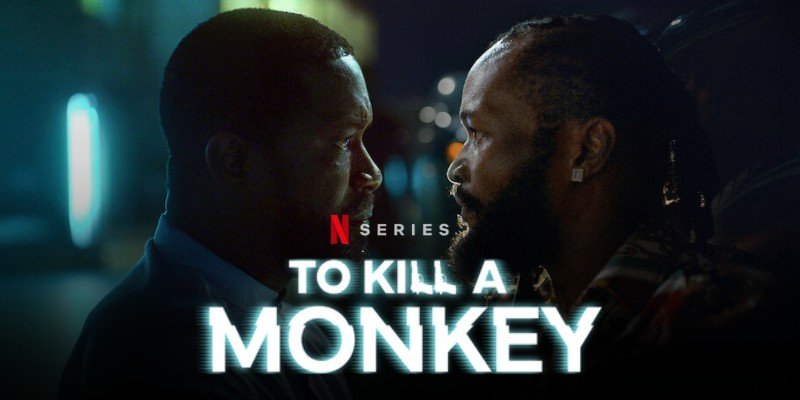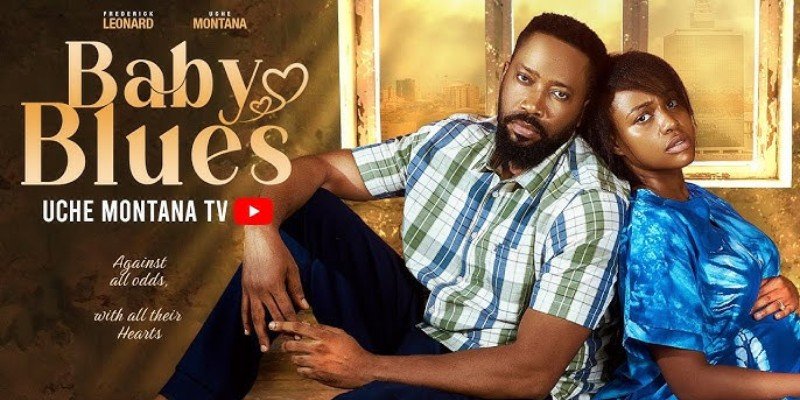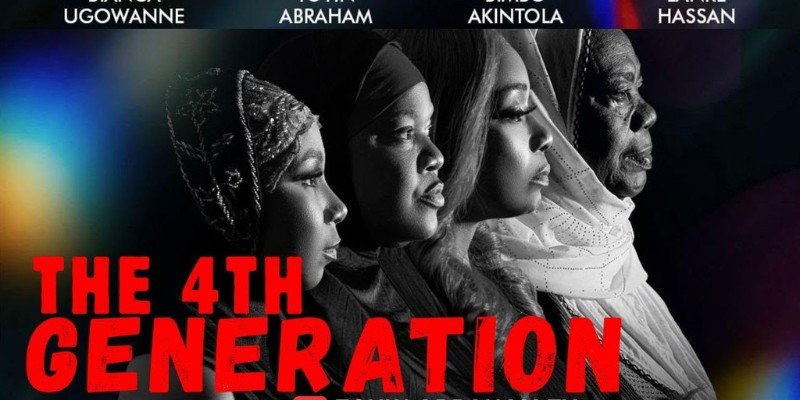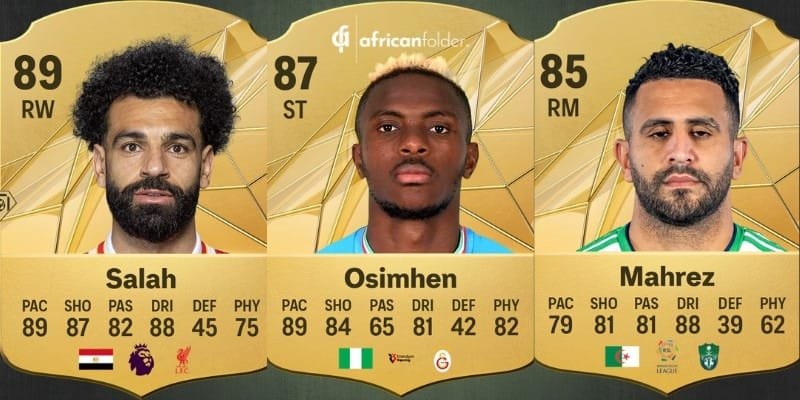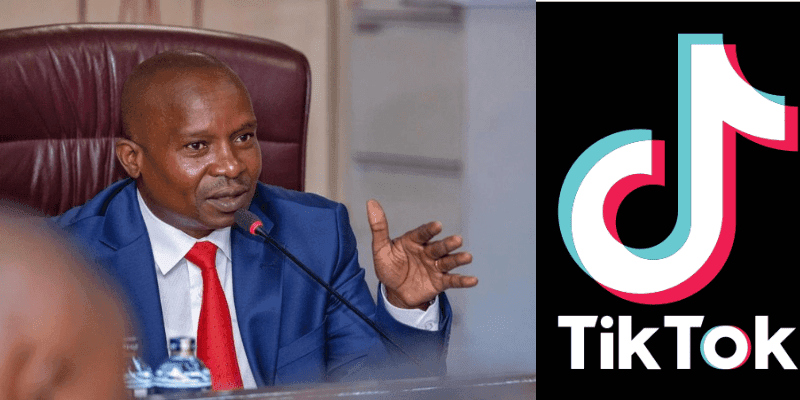The queen of bold storytelling, Kemi Adetiba, is back with a fierce new Netflix original, To Kill A Monkey.
At the heart of this gripping drama is Efe, a man forged by a life of hardship. When desperation pushes him into the shadows of crime, the consequences spiral into a web of chaos he never saw coming. What starts as survival turns into a deadly game of choices, outcomes, and unexpected twists.
Plot
The film To Kill A Monkey kicks off with a ritual that instantly sets the tone: a bunch of young boys swearing blood oaths, vowing to serve their mysterious boss till death. From there, everything goes from tense to tragic, real quick.
We’re introduced to Efe, a man hanging on by a thread. They said he was a programmer, but the only thing he seemed to be coding was bad luck. He had debts climbing like fuel prices, a mother that just died, and a pregnant wife about to go into an emergency C-section. With no cash and no options, Efe did something wild: he slept with his boss to get the money. Yes. You read that right. And no, it didn’t even work.
To make things worse, he entered a “one chance” and lost everything. Again. At this point, rock bottom was starting to look like a permanent residence.
Then there was Mo. She had just bagged a major promotion at the Nigerian Cyber Crimes Commission. Life was looking good, until it wasn’t. A tragic car crash took her entire family in one day. This incident shattered her. She started seeing things, hearing voices, and talking to ghosts. PTSD had her in a chokehold.
While Mo was spiralling, Efe crossed paths with Oboz-Da-Boss, a Lagos big boy with a fake logistics business and a real fraud empire behind it. Efe once saved his life in university, and now Oboz was returning the favour. He paid off Efe’s debts and gave him a seat at the table.
At first, Efe refused. He wasn’t built for crime, or so he thought. But when the legit hustle failed him again (someone even swapped his laptop for wood), he crawled back to Oboz and asked for soap, a literal Yahoo-boy baptism. That’s when the real madness began.
Efe, now with tech and AI knowledge, became the brains behind Oboz’s syndicate. Business was booming. Four years later, Efe was living large: wife, children, mansion, and even a little side chick called Sparkles, because, of course. But money doesn’t erase madness.
An attempt was made on his daughter’s life on her birthday. That same night, someone tried to assassinate Oboz. The enemy? An “old taker”, a ruthless man named Teacher, who demanded 30% of their earnings, like he was collecting taxes. Efe, ever the negotiator, suggested peace. But Oboz chooses violence and kills the teacher’s granddaughter to pass a message. That one move sparked an all-out war.
Meanwhile, Mo was back at the NCCC, still haunted, still broken, but now working on something called “The Monkey Case”. And the deeper she dug, the more she found connections that pointed straight to Efe and Oboz.
As the police closed in and the body count climbed, trust began to crumble. The bromance between Efe and Oboz turned sour. Efe’s wife was drowning in alcohol. Sparkles was sparkling. And the streets were about to erupt.
At the end, everyone was asking the same question: Who is the monkey? And who wins in the end?
Cast
When it comes to casting, Kemi Adetiba doesn’t miss. She doesn’t just know her onions; she knows the farm it was grown on. And with To Kill A Monkey, she proves once again that she’s not in the business of chasing big names; she’s in the business of choosing the right ones.
What makes this casting even more brilliant is her seamless blend of industry veterans with rising stars, old Nollywood, new Nollywood, and most importantly, talented Nollywood. Each actor felt like they were born for their role. So much so, you’ll forget you’ve ever seen them in anything else.
Let’s start with Efe, played by William Benson. Not exactly a household name yet. But after this performance, you won’t forget him. William didn’t just act; he became Efe. His eyes told stories before his mouth did. The pain, the desperation, the fire, it all poured out naturally. Every scene he was in, he owned. A solid 10/10 performance.
Then there’s Bucci Franklin as Oboz-Da-Boss, the ultimate Nollywood gangsta. No one else could’ve pulled this off. His Bini accent? Flawless. His presence? Unshakeable. The way he danced between warmth and menace, loyalty and violence, chef’s kiss. His chemistry with Efe, that fiery mix of bromance and rivalry, crackled through the screen.
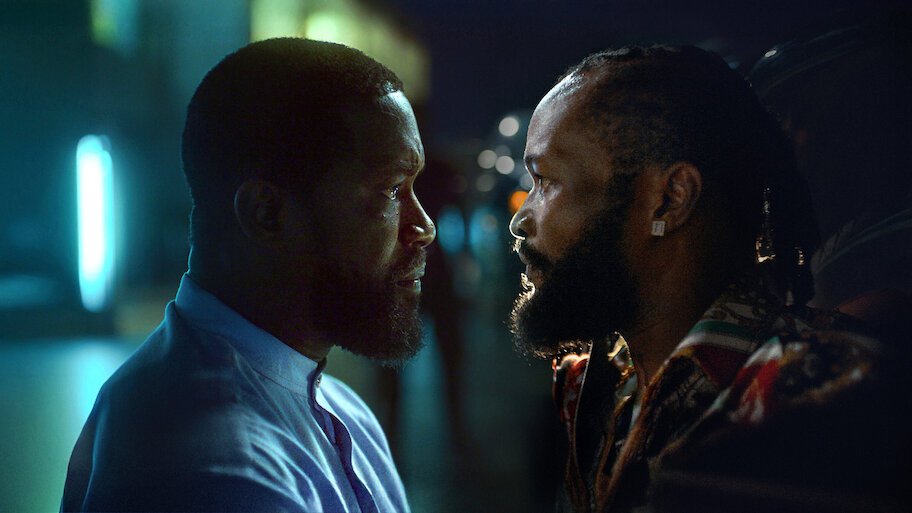
Bimbo Akintola played Motunrayo — and come on, it’s Bimbo. She could act like a tree and still bring tears to your eyes. She was raw, intense, and simply a force. Then, just when we thought it couldn’t get better, Stella Damasus graced our screens again. Talk about a perfect fit; she brought depth and elegance to a role only she could truly own.
And let’s not forget Chidi Mokeme as the teacher. Another masterstroke. Honestly, giving him the teacher’s role instead of Oboz was genius. He had that calculated danger in his eyes, the kind of presence that keeps the whole room on edge. That move right there pulled the entire narrative together like puzzle pieces snapping into place.
Lilian Afegbai as Idia was the feisty, sassy breath of fresh air the film needed. The moment she showed up, you couldn’t help but smile, and that accent? Spot. On.
Other standout appearances came from Sunshine Rosman, Teniola Aladese, Ireti Doyle, Michael Ejoor, and more — all weaving into the story without feeling stuffed or wasted. Everyone served a purpose, and every performance left a mark.
Language
The language in To Kill A Monkey was a masterstroke, a seamless blend of Pidgin English, Urhobo, and Bini. And not just any Bini; we’re talking clean, articulate, authentic Bini, the kind you rarely hear in Nollywood these days. It felt raw, real, and rooted in the culture and street.
Final take
Let’s get this out of the way: Kemi Adetiba is exactly who she says she is. No hype. No fluff. Just pure, intentional storytelling.
To Kill A Monkey is not your average Nigerian movie, and thank God for that. In an industry currently drowning in undercooked plots and rushed endings, this film finally gives us what we’ve been craving: a real story with bones, flesh, and breath.
For too long, we’ve endured back-to-back releases that feel like someone stitched scenes together with chewing gum. But with this one? You can taste the depth. It’s seasoned. Marinated. Slow-cooked. And most importantly, earned.
One of the most impressive things about To Kill A Monkey is how carefully every single character is crafted. Nobody just shows up. Everyone has a past. Everyone has a reason. Even the smallest moment ties back to something bigger.
At first, it feels like you’re watching ten different movies in one: a struggling tech bro, a grieving cybercrime officer, a street kingpin, a traumatised mother, and a girl on TV. But then, like magic, it all starts connecting. Seamlessly. And that’s what happens when you build your story on a solid, well-thought-out backstory.
A perfect example? Mo is recalling Efe from somewhere. That detail could’ve felt random in another film, but not here. Because Kemi laid the groundwork, Mo’s PTSD wasn’t just thrown in for effect. She remembered everything because her trauma sharpened her memory. It made sense. It felt human.
We need to talk about how refreshingly non–ritualistic this plot was. No overused shrine scenes. No cocaine cartel clichés. Instead, Kemi gave us cybercrime, something dangerously relevant and frighteningly real. That’s what she does best: she takes a story we’ve heard whispers of in everyday life, and she blows it up into cinematic gold.
She didn’t need flying witches or dollar rain. She gave us laptops, loyalty, betrayal, and Lagos hustle. That alone deserves a standing ovation. v
Let’s address the only thing people might whine about: the pacing. Yes, it was long. Yes, it took its time. But that’s exactly what Nollywood needs right now. We’ve had enough fast-food filmmaking. This was a slow burn with real flavour. A reminder that if you want to build tension, develop real arcs, and stick the landing, you need to take your time.
And speaking of landings? The ending of To Kill A Monkey didn’t feel rushed. It was planned, it was deserved, and it was satisfying. Just closure that hit where it needed to. The language choices? Authentic. The costumes? Spot-on. Every detail was curated, not just managed.







